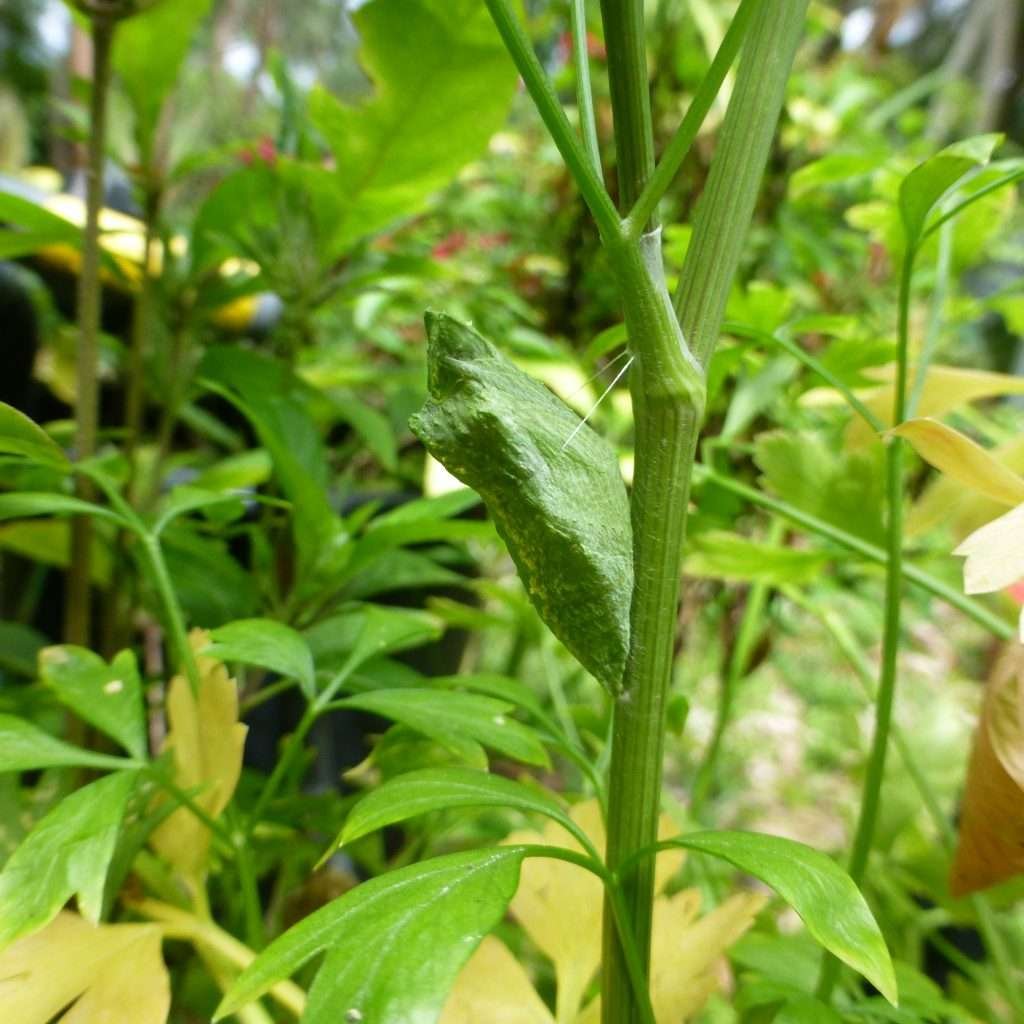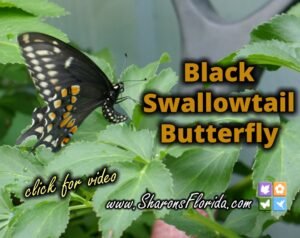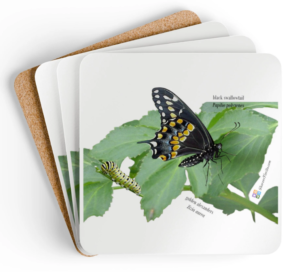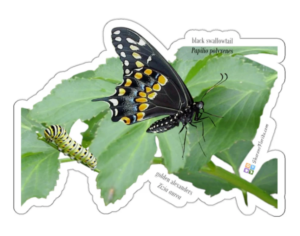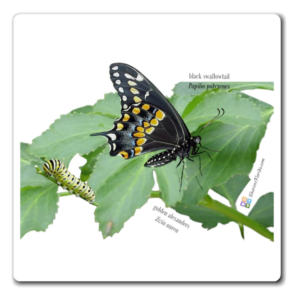Gardening for the Black Swallowtail Butterfly
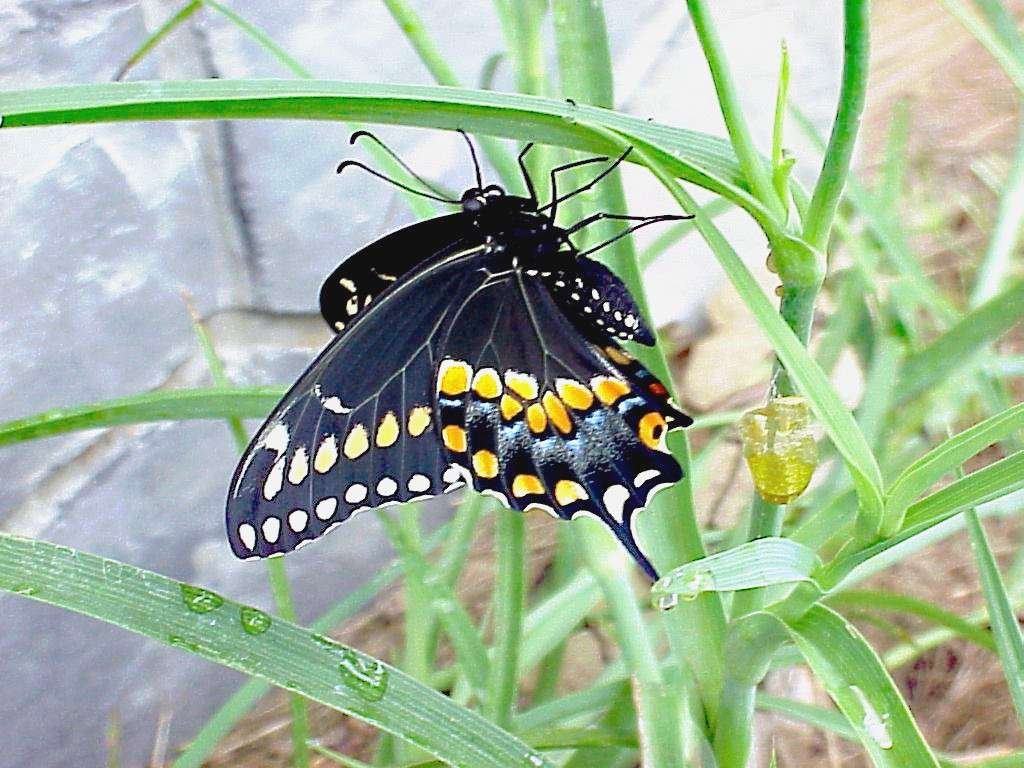
To successfully garden for the black swallowtail butterfly, the butterfly gardener must plant enough of the host plants, plant in multiple locations, incorporate native host plants in the landscape, and allow existing host plants to re-seed to provide for future plants.
Most refer to it as simply, the black swallowtail (Papilio polyxenes), but this beauty is also named the eastern black swallowtail, the parsnip swallowtail, and the American swallowtail. It is a butterfly commonly seen in gardens where herbs such as parsley, dill, rue, and fennel are grown.
Unlike some Florida butterflies, the black swallowtail’s host plants are common herbs and wildflowers that are easy to obtain, and are relatively small when full-grown. They can be added to many tight spaces all throughout the garden. Black swallowtail host plants are common herbs like parsley, dill, and fennel, which are found in the Apiaceae, or celery, family of plants. Native plants in that same family include mock bishopsweed and Golden alexanders.
Black swallowtails are generally found flying lower to the ground than many of the larger butterflies because their host plants are low growing. This increases the chance of the gardener missing this beauty and remaining unaware of her presence, until caterpillars are seen on their herbs.
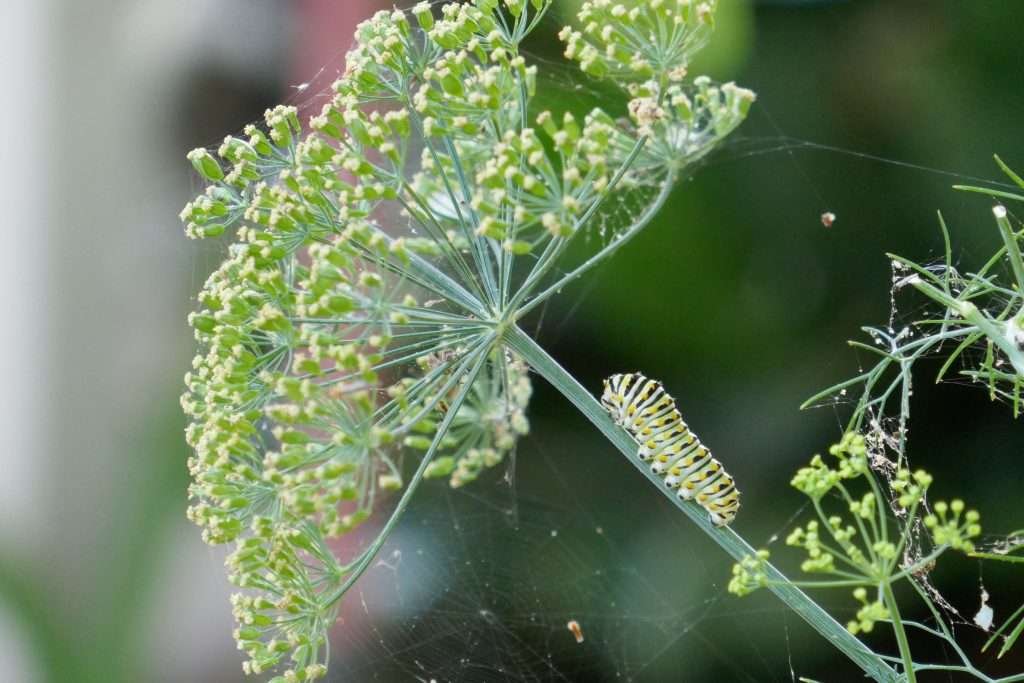
Plant enough of the host plants.
Planting enough of their host plants ensures that the caterpillars have enough food to get them through their growing stages, or instars, and reach the chrysalis stage. From there they will pupate, turning into adult butterflies.
I talk to many butterfly gardeners who are constantly running to the store to buy more plants of parsley and dill because they are overrun with caterpillars and worried about the food supply. It’s easy to run out when there are multiple crops of caterpillars, but it is much cheaper over time to plant enough to start with and allow reseeding, than head to the store for another plant to satisfy immediate demand as it presents itself.
Another thing to consider is that parsley and dill are annuals which really don’t fair well in Florida’s heat and humidity and generally don’t grow well in the hotter months. Bronze fennel, on the other hand, is a good addition because it is a perennial and doesn’t mind the heat.
Also keep in mind that a single caterpillar can decimate a tiny starter plant very quickly, so planting multiples will increase the plant’s chances of surviving the onslaught of the hungry larvae and will be able to re-grow more quickly. Imbalances will occur and I occasionally move caterpillars around the property to fresh plants. It seems like butterfly gardeners everywhere have the same habit.
One great thing about the black swallowtail is its ability to use such a wide variety of host plants, and generally, as long as a plant is in the Apiaceae family, it will be used by them. I have read, as well as written about, black swallowtails using different species of native Eryngium, but honestly I’ve never seen caterpillars on an Eryngium. If anyone has had success here and can share, I’d love to hear about it.
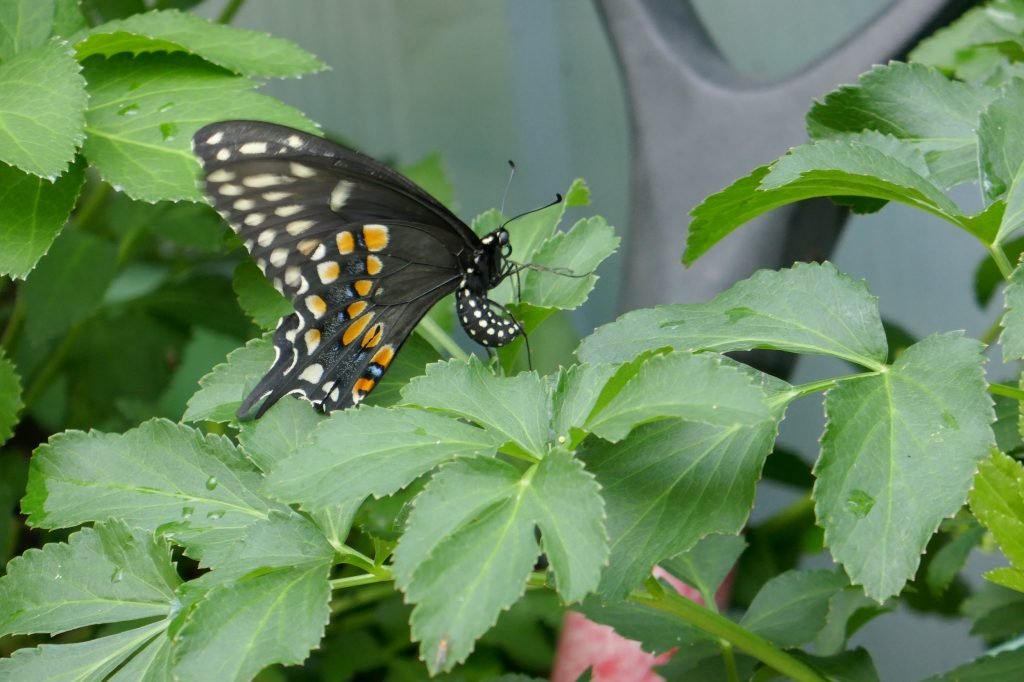
Plant in multiple locations.
Scatter the host plants throughout your green space in as many locations as possible in order to provide enough food for the hungry hordes. When you do run to the store for plants, buy as many as you can afford and group them into as many places as possible to get more bang for your buck. Rather than just planting a single plant in any given space, plant at least three and tuck some in throughout other garden beds and flower pots.
Plant new plants in, and among, other plants, next to container-grown vegetables and flowers, under trees, in and around shrubs, and any other available spot. Some may look a bit crowded at first, but if you have an active butterfly population, the caterpillars will usually keep the foliage trimmed to where it does not interfere with neighboring plants.
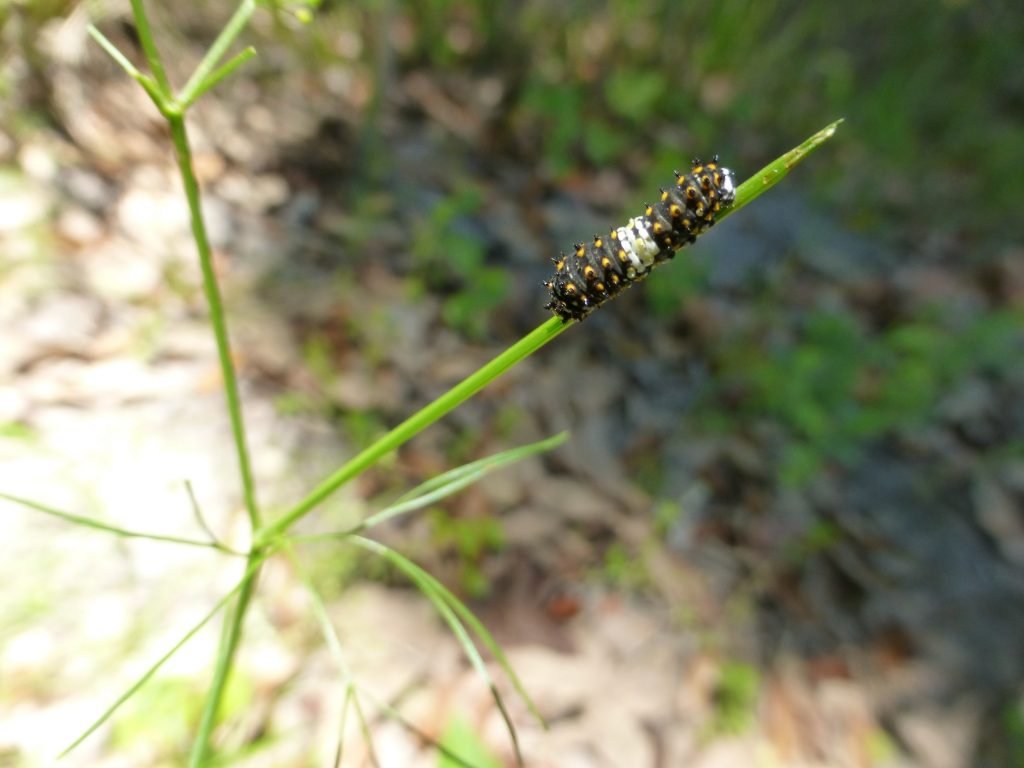
Incorporate native host plants in the landscape.
Regardless of whether you replenish your black swallowtail host plants from the local big box store, or with natives, the same rules apply; caterpillars are voracious feeders and can decimate a plant population pretty quickly, so the hard and fast rule is to plant as much as possible.
Finding a source for native host plants can be difficult, but it is so worth it once they become established in your garden! This frees the gardener from being required to maintain exotic host plants, and is incredibly labor and money-saving. Allow the plants to go to seed, and you will have a continuous source of that particular plant. Make sure to plant them according to their growing requirements for the best chance of success.
A black swallowtail’s native host plants are in the Apiaceae (celery family)
The plants in this family that occur naturally in central Florida are:
Chaerophyllum tainturieri (hairyfruit chervil)
Cicuta maculata (spotted water hemlock)
Cryptotaenia canadensis (Canadian honewort)
Daucus pusillus (American wild carrot)
Eryngium aquaticum (rattlesnakemaster)
Eryngium aromaticum (fragrant eryngo)
Eryngium baldwinii (Baldwin’s eryngo)
Eryngium prostratum (creeping eryngo)
Eryngium yuccifolium (button rattlesnakemaster)
Lilaeopsis carolinensis (Carolina grasswort)
Lilaeopsis chinensis (eastern grasswort)
Ptilimnium capillaceum (mock Bishop’s weed)
Sanicula canadensis (Canadian blacksnakeroot)
Spermolepis divaricata (roughfruit scaleseed)
Spermolepis echinata (bristly scaleseed)
Tiedemannia filiformis (water cowbane)
Trepocarpus aethusae (white nymph)
Zizia aurea (golden alexanders)
Zizia trifoliate (meadow alexanders)
You can read about Mock Bishopsweed here.
I have (Ptilimnium capillaceum) mock bishopsweed seeds for sale here at my Ebay store.
As I’ve already mentioned there are non-native host plants such as green fennel, bronze fennel, parsley, and dill, that are easily obtained from local big box stores, but if you would like to focus on native plants I would suggest joining your local chapter of the Florida Native Plant Society. Local chapters will often conduct field trips to local native plant nurseries, otherwise closed to the public, which is a great way to obtain native plants. Also, many meetings will have plant raffles, and members willing to share plants and seeds. It can be a great resource.
Seed exchange threads on sites like Daves Garden or Houzz’ Florida Gardening Board is also a good way to obtain seeds or cuttings.
Another good resource is your local county Extension Office. Master Gardeners will often tend a small nursery there where you can purchase native plants. You can locate your local extension office here.
Last, but not least, learn to identify Florida native plants through the use of field guides, apps, or websites.
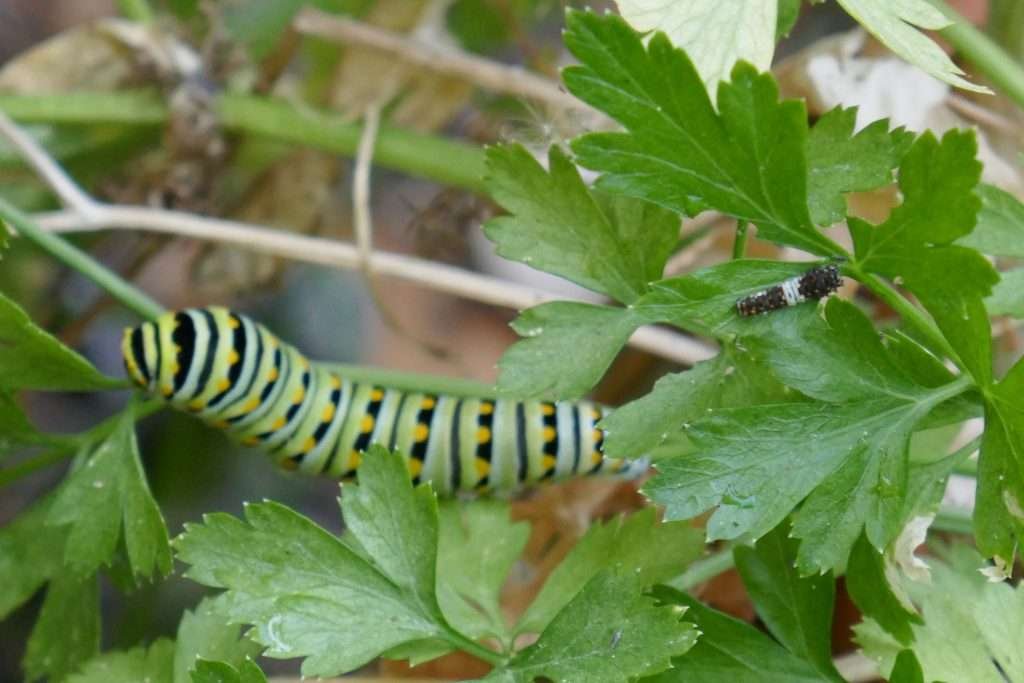
Allow existing host plants to reseed.
Another good strategy is to let your existing plants, be they annuals or perennials, go to seed. I typically let all of my plants do this because I want to grow additional plants at the same location, or to produce baby plants that I can transplant.
I often collect the ripe seeds and scatter them throughout my yard, into existing flower pots, or I just let them drop where they are. Plants always do better when they are directly sown rather than grown in pots and then transplanted, because they started life in that specific area and adapted to its conditions, a big advantage over being suddenly introduced. So, allowing them to re-seed on their own produces a hardier plant. There are always exceptions, but plants are more likely to survive when directly sown.
Most times I drop seeds and forget about them. This is because many native plant seeds need seasonal changes to break dormancy, and germinate. So, it’s much easier to let nature do its thing and not fret (or even think about) what comes up. I usually don’t even take the time to cover them, preferring to let natural rainfall disturb the leaf litter, and soil, around them. This allows young upstarts to find their own niche in which to grow.
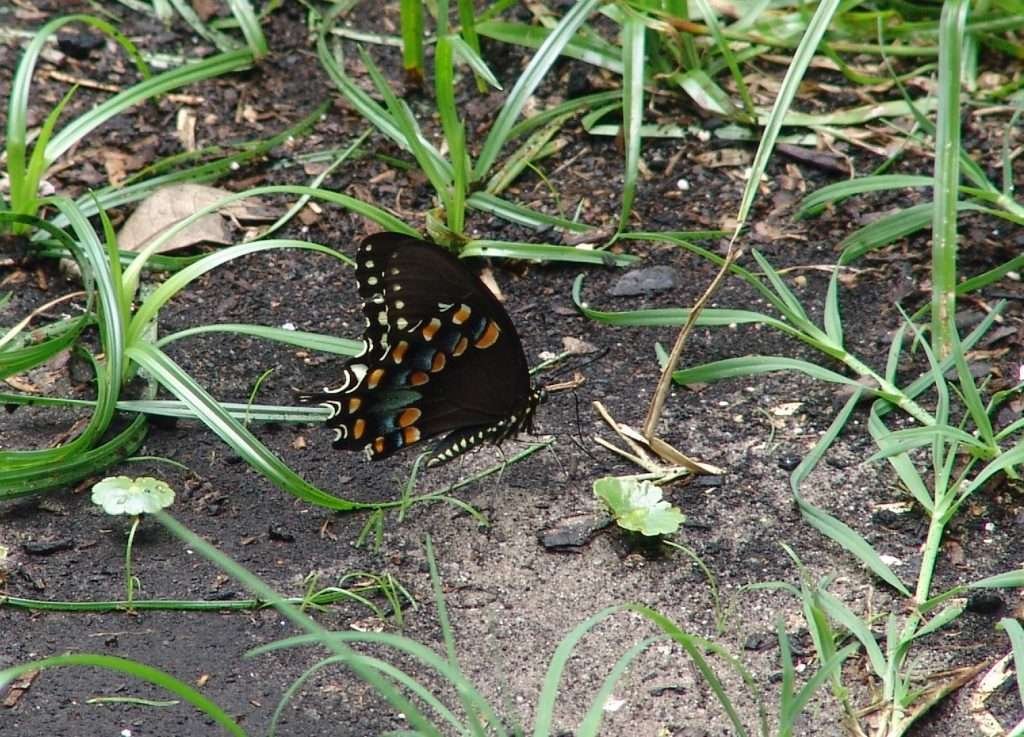
Sit back and enjoy your butterflies, and caterpillars, and don’t stress when some are lost to predators. Nature does its best to keep populations of its fauna in check by making a particularly abundant animal, or insect in this case, food for other animals. Of course, every butterfly gardener wants every individual caterpillar to survive, but quite honestly, this is unrealistic and thinking this way can bring about heartache and angst. For some reason, at least in my garden, black swallowtail caterpillars are mostly predated upon by paper wasps. Once a paper wasp finds a plant with feeding caterpillars, it will return and predate until every last caterpillar is gone. I admit to occasionally intervening by moving the babies to other plants to give them a better chance, but usually I leave them alone.
If you’d like to have your green space certified as a Butterfly Habitat then check out the North American Butterfly Association’s Butterfly Garden and Habitat Program page.
